September saw more Syrians killed than any other month so far this year, according to the Syrian Observatory for Human Rights (SOHR). The UK-based monitor said over 3,300 died last month in the country – a third of whom (995 in total) were civilians. A staggering 70 percent of civilian deaths were caused by airstrikes carried out by Russians, Syrian forces or fighter jets of the US-led coalition – but what about the remaining 30 percent?
Over 400,000 people have been killed since war erupted in Syria in 2011, with the death toll climbing by the hour as the bloodshed continues in the absence of any political settlement to the crisis. Countless innocent souls have been caught in the crossfire between government forces and armed rebels, but fighting is not the only reason why Syrians are losing their lives as the vicious violence brings about a plethora of plights.
Stray bullets and targeted missiles aside, how are Syrians dying?
ISIL’s sadism
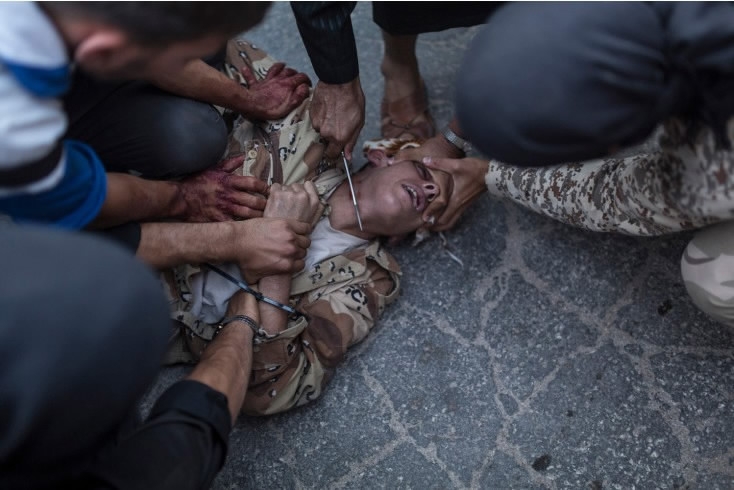
Al Qaeda-linked ISIS militants execute a member of the Syrian army in Keferghan, a town near Aleppo, in northern Syria, on August 31, 2013. /China Daily Photo
Al Qaeda-linked ISIS militants execute a member of the Syrian army in Keferghan, a town near Aleppo, in northern Syria, on August 31, 2013. /China Daily Photo
The tumult in Syria has made the country vulnerable to ISIL’s spread with large swathes of the territory coming under the extremist group’s control since 2014. ISIL used brutality to impose a skewed and strict interpretation of Islamic law in the regions it seized, outlawing anything from smoking to watching television and foreign shows.
A total of 4,954 people have been executed in captivity by members of the terrorist group in the past four years, SOHR said over the weekend. Fifty-five percent of those murdered or 2,750 people were civilians, who allegedly committed adultery, collaborated with the Syrian government, opposition groups or Kurdish fighters, engaged in same-sex activity or violated any of ISIL’s rules.
The group’s execution methods include beheading, stoning, flogging to death, shooting, burning and pushing people off buildings.
Malnutrition predicament
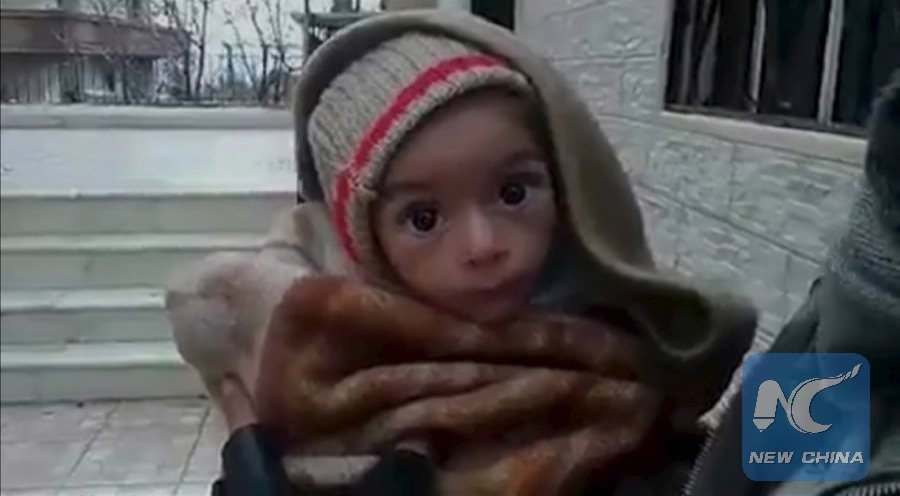
A severely malnourished toddler held up to the camera in a still image taken from a video said to be shot in besieged town of Madaya on January 5, 2016. /Xinhua Photo
A severely malnourished toddler held up to the camera in a still image taken from a video said to be shot in besieged town of Madaya on January 5, 2016. /Xinhua Photo
In the chronic Syrian war, civilians have been used as political pawns. Government forces and rebels have previously cut off entire cities and towns from the outside world via tit-for-tat sieges in order to extort concessions from the other side and gain leverage in population swaps.
Children, pregnant women, old and sick people were left to starve to death despite appeals from humanitarian organizations to allow aid to enter.
Horrifying images of “walking skeletons” and feeble infants from Madaya, a town once held by rebels, and Kefraya, which at the time was encircled by the Syrian army, have exposed what the UN had described a “catastrophic” situation that had entrapped 640,000 people in a vicious cycle of deprivation until the sieges were lifted in March this year.
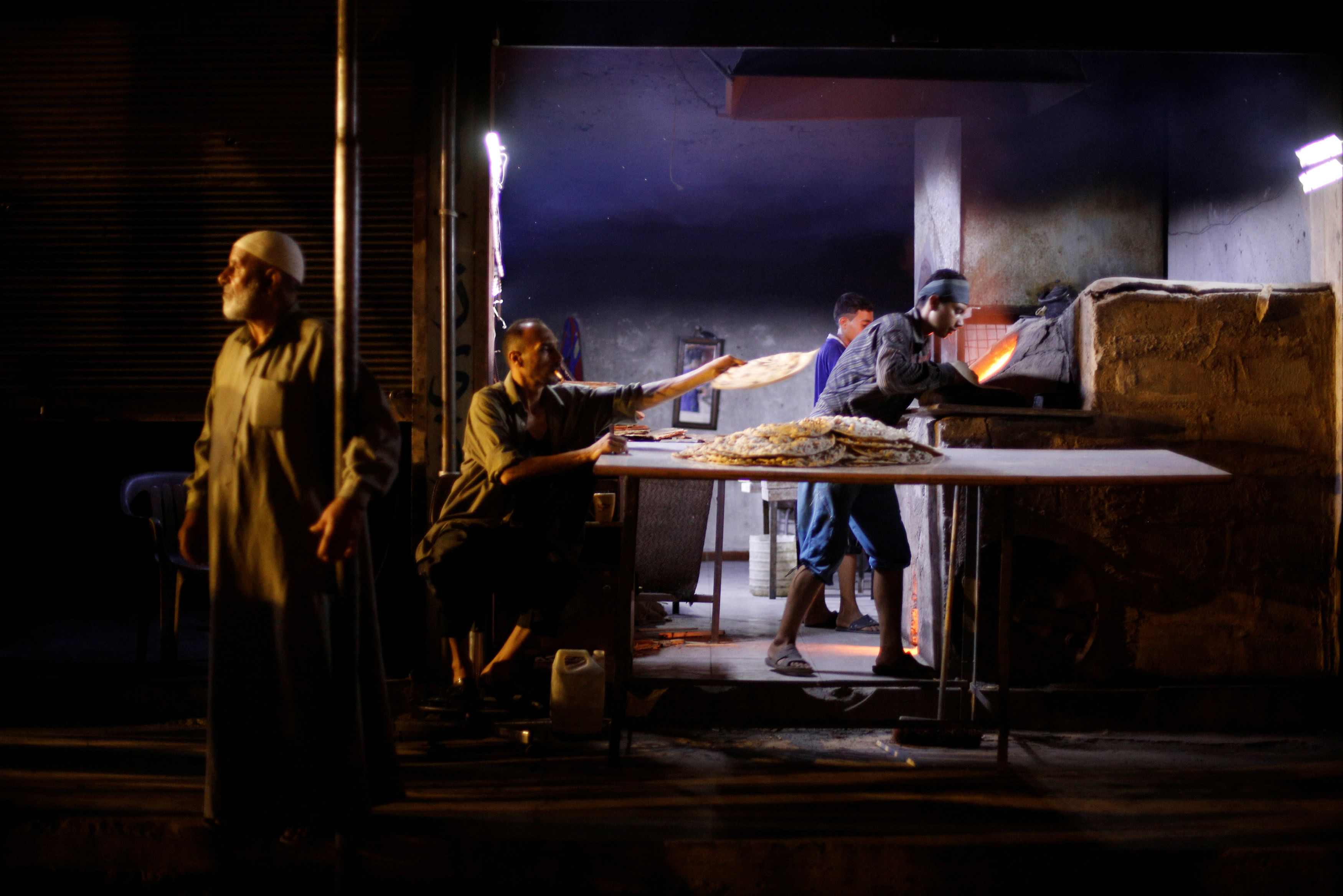
People prepare bread at a bakery in Deir al-Zour, Syria on September 20, 2017. /Reuters Photo
People prepare bread at a bakery in Deir al-Zour, Syria on September 20, 2017. /Reuters Photo
According to British organization Oxfam, over 600,000 Syrians are living in besieged areas, where assistance and relief efforts are “either impossible or extremely difficult” to provide.
But the dire situation extends to the whole of Syria as the agricultural sector has increasingly come under pressure from the prolonged war. Food production has dipped by 40 percent in comparison to pre-conflict levels, according to the World Food Programme (WFP), with bread price skyrocketing up to 1,000 percent in certain areas.
A survey conducted by the UN food agency in 2015 and 2016 in 11 out of the 14 Syrian provinces found that a quarter of children under the age of five and women suffer from anemia (25.9 percent and 24.5 percent respectively).
Disastrous diseases
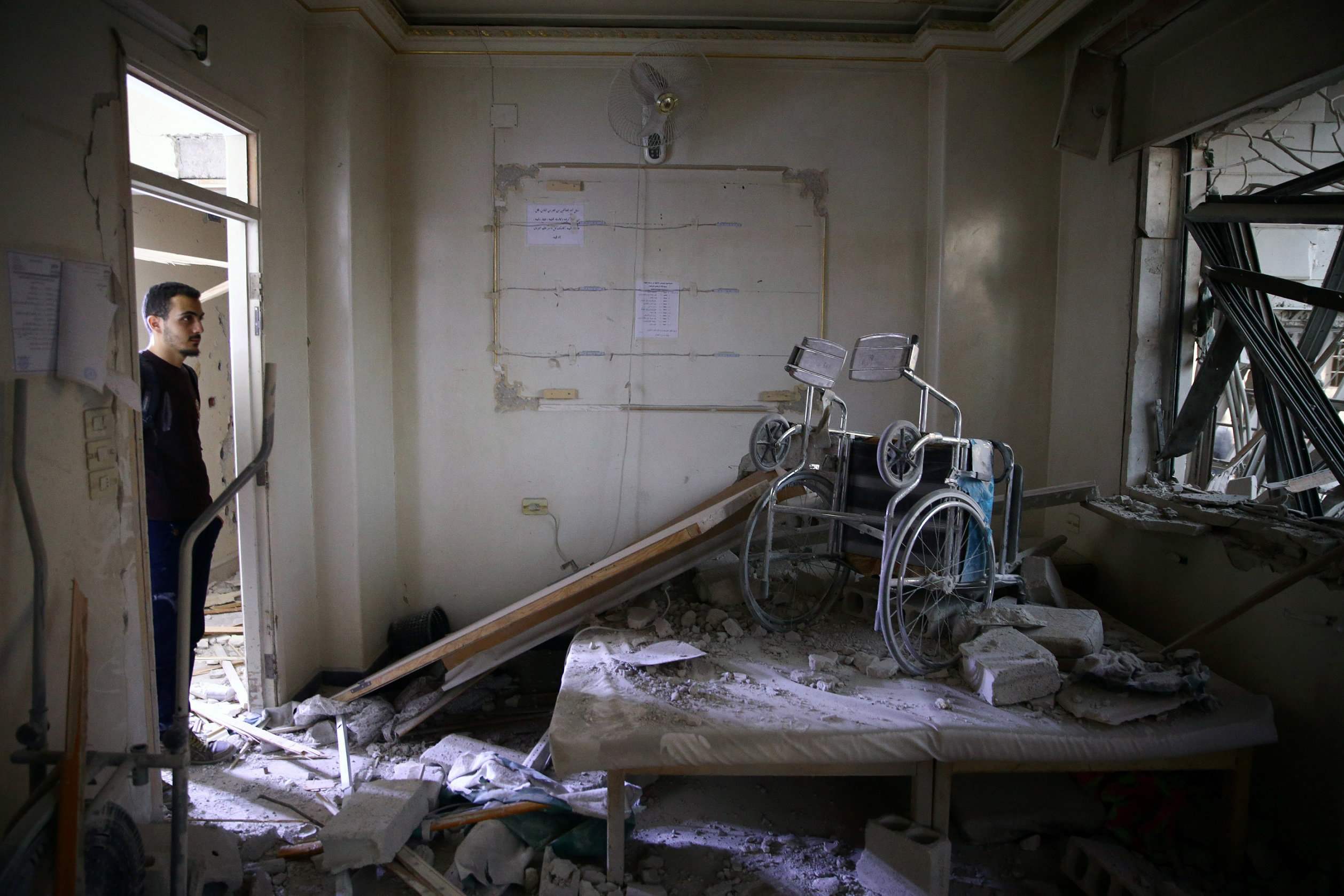
A man inspects a center for handicapped people after shelling on the rebel-held besieged town of Douma, in eastern Ghouta in Damascus, on September 26, 2017. /Reuters Photo
A man inspects a center for handicapped people after shelling on the rebel-held besieged town of Douma, in eastern Ghouta in Damascus, on September 26, 2017. /Reuters Photo
The World Health Organization (WHO) rang the alarm about a polio outbreak in Syria in June this year, with at least 22 children paralyzed to date. This is the second such occurrence of the highly contagious but vaccine preventable disease, following about in October 2013, which affected 20 Syrian kids.
The resurgence of the disease follows outsets of cholera, tuberculosis, measles, cutaneous leishmaniasis (a parasitic disease that causes skin lesions). Diseases have been spreading in Syria as the war-stricken country suffers from a slimming number of medics, fast-depleting medicine supply, poor sanitation and restricted access to healthcare. Systematic attacks on water reservoirs and health facilities have deeply aggravated the already precarious conditions.
According to a July 2017 report by UN-developed tool Monitoring Violence against Health Care, 62 attacks targeted 43 medical establishments in Syria in the first six months of this year. The Syrian American Medical Society documented a total of 252 attacks on medical centers across the country last year.
Suicide risks
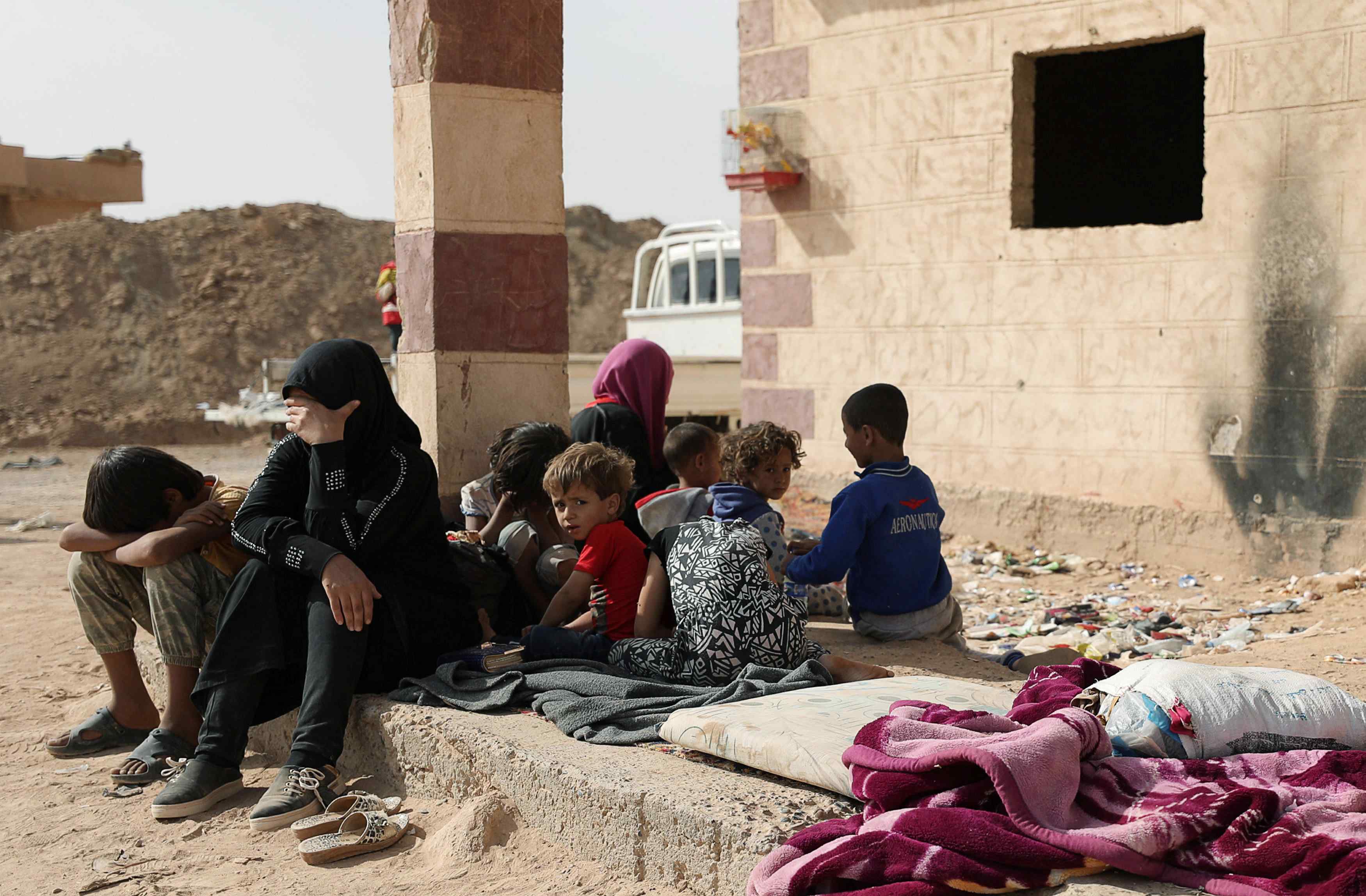
Syrian women and children arrive in the northern Syrian area of Deir al-Zoru on September 24, 2017. /Xinhua Photo
Syrian women and children arrive in the northern Syrian area of Deir al-Zoru on September 24, 2017. /Xinhua Photo
Death, destruction and despair have left invisible marks on Syrians’ psyche, especially the children. There are no available figures about suicide rates in the country, however recent studies have shed light on the severity of the psychological trauma violence has caused. A report by Save the Children published in March this year spoke of a surge in self-injury and suicide attempts among children as young as 12. The German Federal Chamber of Psychotherapists estimated in a 2015 study that 50 percent of Syrian refugees in the country were dealing with mental issues.
Even before the civil war broke out in their country, Syrians were living in a restive region that created the right circumstances for mental conditions to develop. Security instability and decades-long turmoil in the Middle East caused deaths from self-harm to climb by 100 percent in the past 25 years in Syria, Yemen, Iraq, Afghanistan and Libya, according to data from the University of Washington in Seattle. In comparison, suicidal deaths in the rest of the world increased 19 percent during the same period.
Dangerous journey

A three-year-old Syrian boy, Aylan Kurdi, drowned while trying to reach the Greek island of Kos on 2 September 2015. /Xinhua Photo
A three-year-old Syrian boy, Aylan Kurdi, drowned while trying to reach the Greek island of Kos on 2 September 2015. /Xinhua Photo
The horrors of the conflict in Syria have triggered the biggest and worst refugee crisis the world has witnessed since World War Two. Waves of Syrians have fled the country looking for safety elsewhere, jeopardizing their lives on a journey through the Mediterranean Sea to reach Europe.
Around five million Syrians are thought to have left the country, while 6.3 million have been internally displaced. Those who manage to leave the devastation behind, face an arduous and unsafe trip as human traffickers smuggle them on crowded and flimsy dinghies that risk sinking along the way.
The image of Aylan Kurdi, a three-year-old Syrian boy lying motionless on a beach near Bodrum in Turkey after the boat his family was capsized, has rattled the consciousness of the world and brought the refugee crisis to the fore.
Last year set a new record of migrants dying while crossing the Mediterranean, with at least 5,000 deaths documented. Amnesty International predicted in July this year that 2017 could overtake 2016 as the deadliest year for refugees at sea.
Winter woes
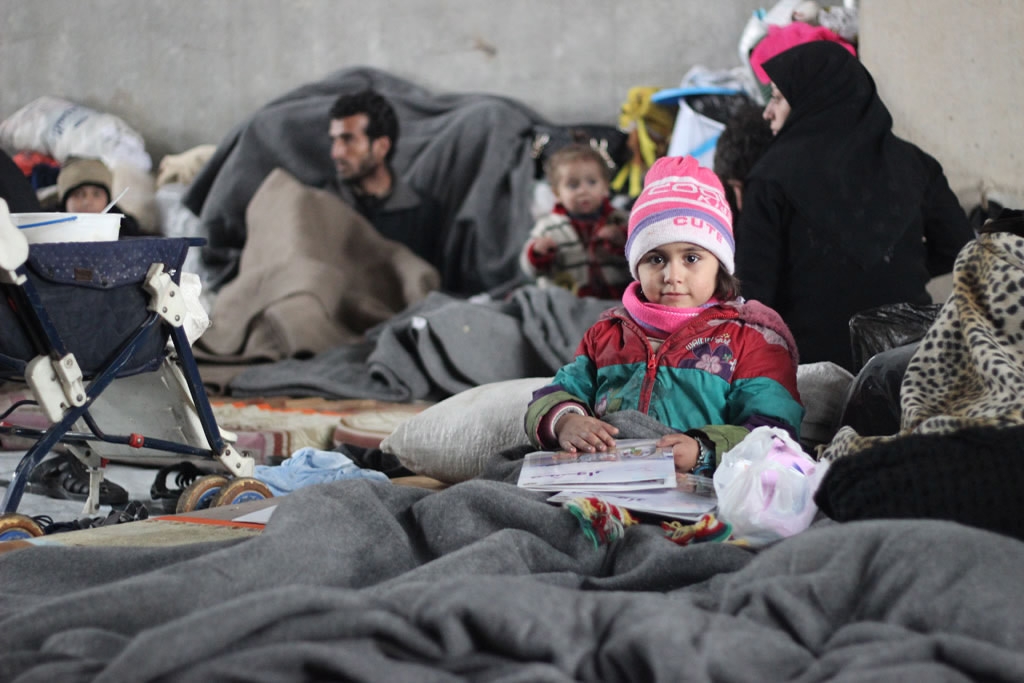
Families that fled fighting in eastern Aleppo take refuge in a large warehouse in Jibreen. /Photo via UNICEF
Families that fled fighting in eastern Aleppo take refuge in a large warehouse in Jibreen. /Photo via UNICEF
For the majority of Syrian refugees, safely reaching another country means settling in makeshift tents where living conditions are harrowing and access to basic infrastructure services like sanitation, heating, electricity and clean water is a luxury they can’t afford.
The deplorable situation intensifies during winter as the ramshackle settlements and insecure shelters fail to provide protection from subzero temperatures, raging rainstorms, wind and snow. The winter program of UN refugee agency UNHCR assists some 850,000 Syrians in Lebanon providing them with fuel, blankets and stoves among other necessities – however, the number of refugees in the country has surpassed the 1.5 million people leaving hundreds of households out in the cold.
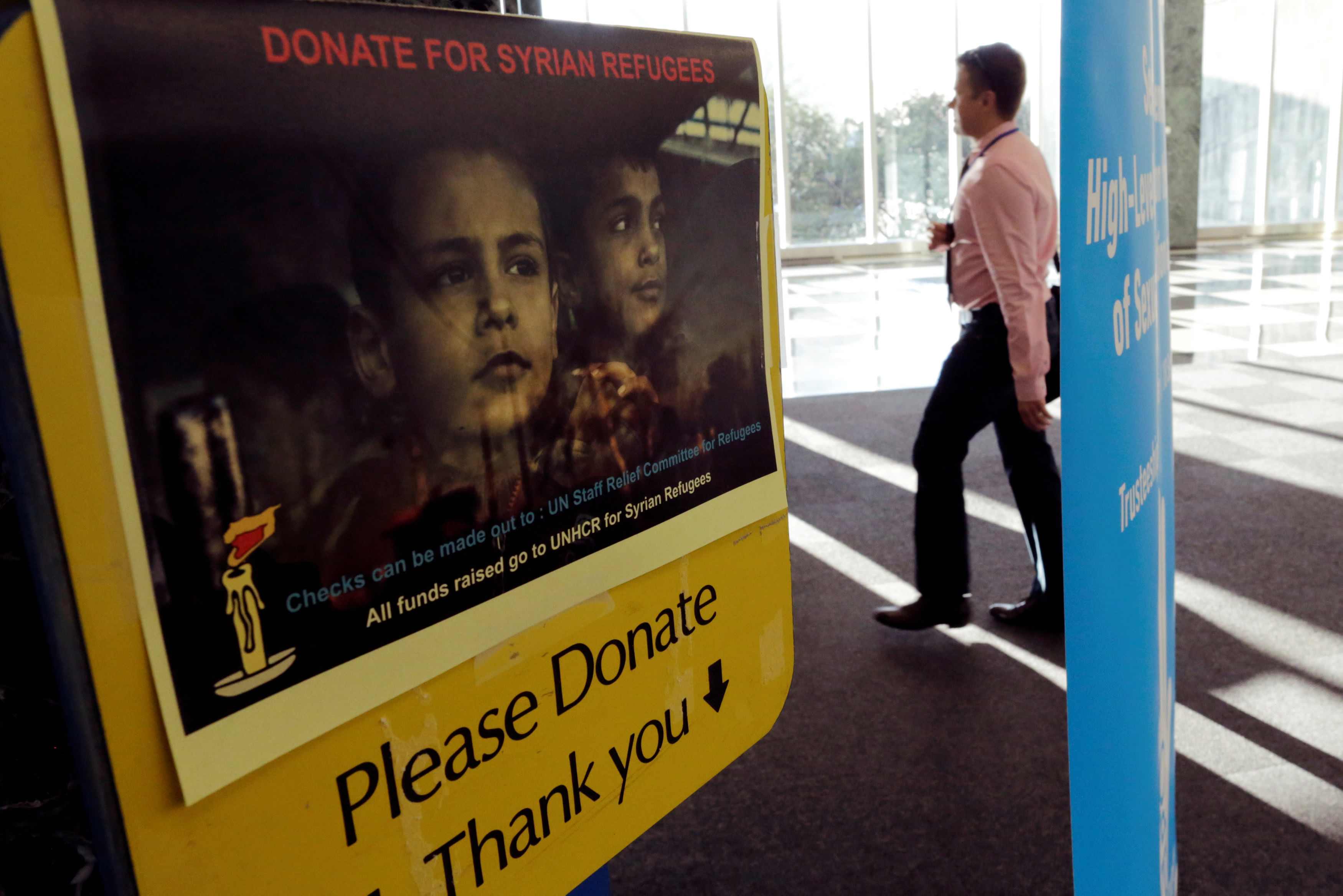
A man walks near a box for donations to Syrian refugees during the 72nd United Nations General Assembly at UN headquarters in New York, on September 23, 2017. /Reuters Photo
A man walks near a box for donations to Syrian refugees during the 72nd United Nations General Assembly at UN headquarters in New York, on September 23, 2017. /Reuters Photo
The UN plans for Syria and the region require a total of 8 billion US dollars this year, according to the organization’s estimates. Its target, however, has not been reached as only six billion US dollars in funding have been pledged by 41 donors at a conference in Brussels in April this year.
Governments around the world have also been standing in solidarity with the Syrian people. Last month, the US announced it will donate more than 697 million US dollars in humanitarian assistance and China agreed earlier this year on sending 16 million US dollar-worth in aid to the Syrian government.
However, the stalled negotiations between warring sides amid acrimony and disaccord on a political agenda for the country’s future means Syrians will keep dying a thousand deaths before the bloodshed stops.










